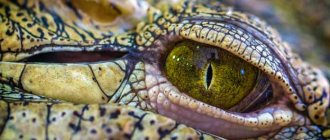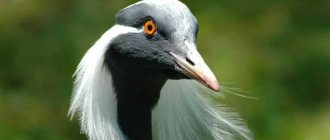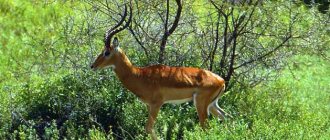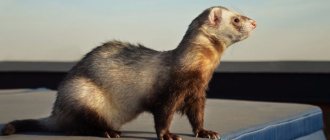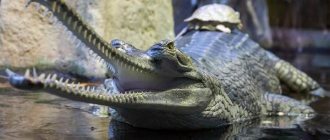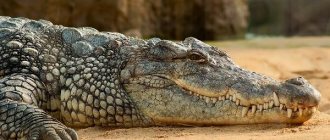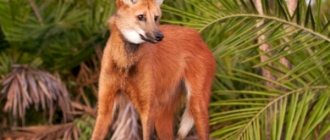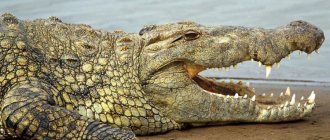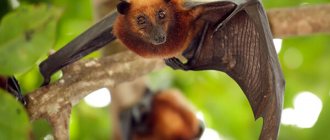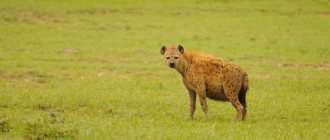Our article on the site about animals Zverey.Ru this time is dedicated to crocodiles, but in a somewhat narrow aspect. We will talk about the nutrition of these carnivorous reptiles. Adults and small individuals feed differently. You will learn things about the diet that you might not immediately believe. We will talk about the strength of a crocodile's jaws, and why it is able to cope with both large and small prey. They also swallow completely inedible objects. Which ones and why - read on.
Appearance of a crocodile
Crocodiles, depending on the species, can be from two to seven meters. Weight is approximately 400-800 kilograms. Males are always several times larger than females.
The body is built in such a way that reptiles can move well both on land and in water. The crocodile's head is elongated, ending with a long muzzle, the body is elongated and flat, the tail tapers towards the end.
There are 5 toes on the front paws and 4 on the hind paws. The paws of crocodiles are short, but their speed on land is about 15 km/h, in water up to 35 km/h.
How young animals grow
The birth of small crocodiles is a fascinating phenomenon. A few days before they are ready to hatch from the egg, the mother begins to hear special sounds like croaking, which indicate that the moment of birth is near. Every day these sounds become louder, and at a certain moment the mother decides that it is time for their meeting to take place.
She carefully digs out the clutch, and if necessary, even helps the kids break the shell so that the children can get out of the eggs. The offspring are born fully formed: they can already run fast and feed themselves. The mother finds a quiet creek, where she looks after the cubs for several more months. Sometimes it is not the natural mother who looks after, but another female lower in the hierarchy. In some species, the mother and father take turns protecting the common offspring while the second parent is hunting.
Despite such touching care, not all cubs reach puberty. Sometimes they are eaten by birds of prey, mammals or large lizards. In addition, in case of drought, overpopulation or lack of food, young animals can be eaten by their own relatives.
Growing crocodiles have an incredible appetite: they constantly eat insects, shellfish, worms and other sources of protein that allow them to grow quickly. Growth is proceeding at an incredible pace, and within the first three years, representatives of most species are able to grow up to 1.5 m in length. Growth does not stop even at a more mature age: few people know that crocodiles grow throughout their lives, it’s just that the speed and rate of growth decreases. Old animals add only 1-2 cm per year.
Scientists say that the lifespan of these reptiles is 80-100 years. But such data is valid only for those animals that live in captivity, and at the same time in excellent conditions. In the wild, it is almost impossible to find a specimen over 50 years old, since life in the wild is full of dangers. In addition, zoos employ qualified veterinarians who provide medical care to these giant amphibians. Unfortunately, there are no such privileges in the wild.
Crocodile skull
The animal crocodile is very similar in head structure to a dinosaur; all important parts: eyes, ears, nostrils are located closer to the top.
The reptile can peek out of the water very discreetly, watching for prey. The eyes are distinguished by the presence of a third eyelid and lacrimal glands that flush the eye.
The mouth contains teeth in the shape of a cone; they can be up to 5 centimeters in length.
The number of teeth is from 72 to 100; the inner part of the tooth constantly forms new sharp teeth, which grow as the old ones are ground down.
Crocodile body
The body is covered with hard skin, which consists of rectangles. Under the layer of skin there is something like a shell.
The skin can be sandy, black, dark green or gray-brown. It depends on the type of crocodiles.
Note!
Animals of the Red Book of Russia: complete list of animals, photo, name, description
- A Guide to Fish Oil and Omega-3
Koala: photo, lifestyle, habitat, habits, character, types, interesting facts
The predator's heart is four-chambered; its blood contains antibiotics that protect the blood from infection and dirt.
There are stones in the stomach, they help digest food and help stay under water. Crocodiles live up to 100 years in the wild.
"Bathyscaphes"
These animals breathe with their lungs, but at the same time they can remain in the water column for so long that it is very difficult for other representatives of terrestrial fauna to compare with them in this indicator. The fact is that their lungs have a very large volume, allowing them to receive a significant amount of oxygen in one deep breath taken before diving. The system of muscles around the lungs can move air in such a way as to maintain the chosen body position. In addition, the diaphragm can also shift and thereby change the position of the internal organs so as to shift the center of gravity and provide the reptile with the desired position.
Another useful device is a special partition in the nasopharynx, which separates the nose and oral cavity. Thanks to this, the amphibian can open its mouth in the water space, while continuing to inhale air through its nose.
The composition of crocodile blood differs from that of mammals: it contains an increased amount of active hemoglobin, which carries oxygen. This, if necessary, helps crocodiles stay under water for up to two hours without experiencing a lack of oxygen.
Nutrition of crocodiles
Hunting takes place at night, but if the prey is nearby during the daytime, nothing prevents the animal from feasting on it. On part of the jaw there are receptors that sense prey at a considerable distance.
The main food is birds, fish and small mammals. The choice of prey size also depends on the age of the crocodile.
What crocodiles eat: fish, animals, mammals - this is prey for small predators; large crocodiles can catch antelope, wild boar or livestock.
Where do crocodiles live?
Reptiles are most often found in fresh water, but can sometimes be found in salt water. The permanent habitat is various rivers and swamps.
Habitats: Australia, Africa, Haiti, Cuba, Jamaica.
There are especially many crocodiles in the rivers of Australia; they simply filled the entire continent.
Every year, several people in these areas fall into the mouths of animals. In Russia, crocodiles simply cannot get along because the frosts are too severe.
Life at the Zoo
At the zoo, crocodiles are fed regularly.
They can eat every day, maximum every other day. In fact, such food is harmful for the animal; their digestive system is designed in such a way that food is digested in 4-5 days. Children are given food:
- Laboratory mice.
- Toad.
- Various insects.
- Day-old chicks.
To ensure that the food is sufficiently fortified (vitamin B1, C), beef or beef liver is added to it. The presence of fatty foods can lead to blockage of veins, so fatty meat and the skin of poultry are removed.
For adults, the diet is a little simpler:
- Birds.
- Fish.
- Beef.
Eggs are periodically given as a delicacy. Adults are fed 2-3 times every 7 days.
When feeding crocodiles in captivity, the following points should be considered:
- Various living creatures need to be cleaned of fur, feathers and skin. It is this kind of food that is most similar to what he eats in the wild.
- Fish in the diet does not allow vitamin B1 to be properly absorbed. Therefore, it is boiled a little before serving.
- Fatty meats are excluded.
If you feed a crocodile only fish, it will develop vitamin deficiency. With a fish diet, additional vitamins of group B1 are added to food. It is important to provide the animal with calcium and vitamin C.
There is an interesting pattern among crocodiles: if you switch them from a fish diet to a meat diet, they will be happy, but on the contrary, from meat to fish, it can cause them to refuse food.
If you decide to keep an exotic animal at home, then carefully monitor its diet. Otherwise, he may start hunting for household members.
A fed animal has a certain passivity; it lies motionless and pleases others with its appearance. While the crocodile is digesting food (3-4 days), it is in a state of calm. Almost 60% of what you eat is converted into body fat. The more it accumulates, the longer the animal can go without food.
The animal's diet should include both frozen and fresh (live) foods. If the food is only frozen, the reptile may develop rickets.
No matter how long a crocodile lives at home, it will never become tame. Therefore, there is no need to let your guard down with him. Don't experiment with putting your hand in the mouth. Such games can end in disaster.
There is no need to remove the reptile from the terrarium. He perceives it as his home. Removal will put the animal under great stress.
Life of a Predator
The main part of life is spent in bodies of water, where the animal is cool and comfortable to catch food. To lay eggs, animals come to land.
Crocodiles are cold-blooded animals. A special layer under the shell always maintains the same temperature. During drought, animals hibernate.
You can tell what crocodiles eat, because their stomach is very strong. More experienced crocodiles can even afford to feast on a leopard that has come to a pond to drink.
Emperor penguins
Emperor penguins can survive in the harshest climates of Antarctica and even raise their young in very cold environments. Males can incubate eggs and keep young for months, surviving on a layer of subcutaneous fat for up to 120 days without food, while females search for food.
Snakes, like all reptiles, are cold-blooded, meaning they cannot regulate their body temperature and during cold weather they enter a state of low energy consumption. Many snakes burrow underground during this time, slowing their metabolism by up to 70 percent, surviving for up to a year without food.
